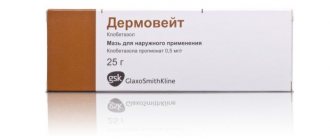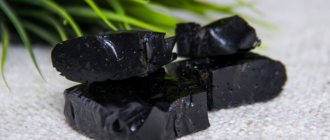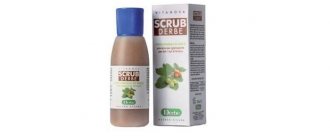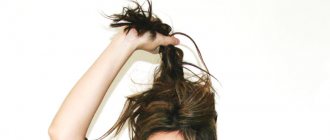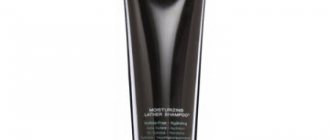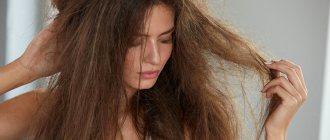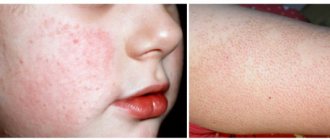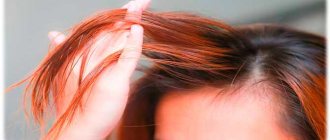For adults, dandruff is almost natural. Approximately every month, the upper stratum corneum of the skin changes; old scales are separated from the epidermis.
However, this natural phenomenon can also be the cause of other, serious skin problems. Therefore, it is important to distinguish between a normal physiological process of the body and a disease.
It is worth noting that dandruff in children is extremely rare, unlike in adults. When the body functions properly, skin cells appear in the basal layers and move towards the upper ones.
During the entire journey, about 25 days, they become thinner, dry, and in their keratinized, completely dead state, invisible to the human eye, fly off the head when washed.
If the renewal process is accelerated to 7-10 days, the cells do not have time to reach their completely dead state and appear in the form of noticeable white plates that stick to the hair and each other.
With dandruff, the scalp may itch, but there should be no redness, and especially no bloody wounds; this is a sure sign of other, more serious diseases. Their presence can only be confirmed by a specialist: a dermatologist or trichologist after passing the necessary tests.
If the color of the skin scales is not white, but yellow, then this is another form of dandruff - oily. It happens that the sebaceous glands work more intensely than necessary; in this case, sebum forms a sticky surface on the hair roots, which is why the yellow color appears on the scales.
Causes of fungal scalp infection
Microsporia is the most common infection of the scalp. Causes of the disease:
- In 98% of cases, the cause of microsporia is the zooanthropophilic fungi Microsporum canis (dog microsporum) and Microsporum folineum (cat microsporum). Cats (more often) and dogs (less often) get sick and transmit the infection to humans. These pathogens cause superficial microsporia.
- In 2% of cases, the cause of microsporia is the anthropophilic fungi Microsporum audouinii (more often) and the more contagious Microsporum ferrugineum (less often). These pathogens cause infiltrative-suppurative microsporia.
- Microsporum gypseum and Microsporum nanum live in soil. This type of microsporia is very rare.
Trichophytosis of the scalp is less common than microsporia. Its causative agents are:
- Anthropophilic fungi Trichophyton tonsurans, less commonly Trichophyton violaceum. They cause superficial trichophytosis and are also the cause of chronic trichophytosis in adults.
- Zooanthropophilic fungi Trichophyton mentagraphytes (var. gipseum) and Trichophyton verrucosum (var. faviforme). Infection occurs from large domestic animals and rodents. Fungi are the cause of the development of infiltrative-suppurative trichophytosis.
Favus or scab is extremely rare in the Russian Federation. Its cause is the anthropophilic fungi Trichophyton Schonleinii. Cases of infection from mice and cats have been reported.
Rice. 3. Colonies of fungi Microsporum canis (photo on the left) and Trichophyton mentagrophytes (photo on the right).
Epidemiology
- Microsporum canis fungi are infected from sick cats and dogs (usually kittens). Mostly children get sick. They become infected through direct contact with animals. By the time of puberty, self-healing is noted, which is associated with the normalization of cellular-humoral immunity.
- Infection with the fungi Microsporum gypseum and Microsporum nanum occurs in adults cultivating the soil.
- Anthropophilic species of fungi that cause microsporia and trichophytosis are infected from sick people and infected household items (pillowcases, hats, scarves, scissors, combs, etc.).
- The source of Trichophyton mentagraphytes mushrooms is domestic animals: cattle, horses, calves, goats and donkeys, as well as wild animals. The source of Trichophyton verrucosum are small mouse-like rodents, rabbits, gophers and guinea pigs. Transmission of infection from a sick person is possible. Infection from animals occurs through direct contact, as well as through the hair and scales that animals leave on the soil, hay and feed. Rural and urban residents - workers of hippodromes, circuses, zoos and veterinary institutions - are getting sick. In addition to animals, the role of grasshoppers in transmitting infection has been proven. Trichophytons were found in corn stalks and straw.
- Favus spreads mainly among members of the same family. Low levels of sanitation and personal hygiene contribute to the appearance of mycosis.
Rice. 4. Kittens, cats and dogs are the main sources of microsporia.
Rice. 5. Cattle and horses are the main sources of zooanthroponotic trichophytosis.
Signs of fungal damage to the scalp
There are superficial and infiltrative-suppurative forms of microsporia and trichophytosis. In some patients, trichophytosis becomes chronic.
Superficial form of microsporia
5 - 7 days after infection, 1 - 2 large foci (3 - 5 cm in diameter) of hair thinning and many small ones (0.1 - 0.3 cm in diameter) appear on the scalp. The lesions are round, have clear boundaries, covered with grayish-white (asbestos-like) scales. Inflammation is mild or absent.
With microsporia, hair breaks off not at the root, as with trichophytosis, but at a height of 4 - 8 mm, which is why they appear trimmed (the appearance of a mown meadow), are easily pulled out, and are surrounded, like a muff, by accumulations of fungal spores. After 10 - 12 days from the onset of the disease, you can see an emerald-colored glow in the rays of a Wood's fluorescent lamp.
Rice. 6. In the photo there is a scalp fungus - microsporia.
Rice. 7. In the photo there is a scalp fungus - microsporia or ringworm.
Superficial form of trichophytosis
6-7 days after infection, single very small (small-focal form) or large (large-focal form) lesions appear on the scalp. Some of the lesions increase in size due to fusion, as a result of which the scalp is covered with many flaky bald patches. Large lesions have an irregular shape and unclear outline. The inflammatory component is weakly expressed.
The hair on the head breaks off at the root - at a height of 2 - 3 mm, as a result of which the skin looks like black dots. Affected hair becomes dull, loses elasticity, becomes brittle, turns gray and thickens. Some of the hair ends are curved in the form of a hook. Along with broken hair, healthy hair growth is noted. There is no glow under Wood's lamp.
Without treatment, the disease lasts for years and often takes a chronic course, which is observed only in women. In men, trichophytosis is self-healing. In some cases, damage to the mustache and beard growth area is observed.
Rice. 8. In the photo there is a scalp fungus - “black dot” trichophytosis.
Rice. 9. The photo shows trichophytosis of the mustache growth area.
Other types of unpleasant diseases
- Alopecia. In other words, this is baldness. Most often it appears for some internal reasons. That is why treatment is quite difficult to carry out, especially at home. Not every doctor can choose the right type of drugs and procedures.
- Most often, hair becomes thinner and soon falls out due to hormone imbalance. For example, if the amount of male sex hormones, which both sexes have, increases. As for representatives of the male population specifically, an equally rare cause may be a genetic component. Women go bald due to poor functioning of the adrenal glands. In addition, thyroid diseases, weakened immunity, as well as chronic diseases of the stomach and intestines, such as dysbacteriosis, can affect this. Prolonged stress and seborrhea will also be the root cause for the development of this disease.
- Gray early hair. Even doctors cannot always explain the root cause without a full examination of the patient. However, most often it is formed due to severe long-term stress. As for young people, the cause is diseases of internal organs, which many young people suffer from, especially in our time. The lack of substances such as calcium, sulfur and copper do their dirty work, depriving the hair of color and life. Often the same hormones, the thyroid gland, liver problems, and impaired metabolism are used. If gray hair appears at an early age, you should contact not only a trichologist, but also a therapist.
- Trichoclasia nodosa. This type of disease is characterized by the formation of nodules. This causes brittleness and hair loss. It most often manifests itself during injury and damage to the hairline. To get rid of an unpleasant sore, you should restore the outer layer of hair - the cuticle. If the shaft, the base of the hair, is under strong protection, then the disease will disappear.
This is not a complete list of diseases, but the most common ones are presented here. Do not panic if any of them are discovered, it is important to simply go to a trichologist as soon as possible, who will be able to make an accurate diagnosis, carry out all the tests, and prescribe the necessary medications and procedures.
Self-medication is strictly prohibited, since some types of these diseases are contagious and can spread to close relatives and friends. Among all diseases, there are both chronic and completely curable ones, however, in any case, you should not waste time and contact a qualified specialist to confirm the diagnosis and timely treatment of the hair and scalp.
Features of hair damage with trichophytosis
Trichophyton ectothrix
Zooanthropophilic trichophytons belong to the group Trichophyton ectothrix (ecto - outside). They have large and small spores, which form sheaths at the base of the hair: the wider ones are large-spored, the narrower ones are small-spored. Along with spores, short or long chains of rounded spores are found in the peripheral region of the hair. Trichophyton ectothrix are the cause of the development of infiltrative-suppurative processes and purulent melting of follicles.
Trichophyton endothrix
Anthropophilic trichophytons belong to the group Trichophyton endothrix (endo - inside). The spores of these fungi are found inside the hair. They have a round shape, are large in size (5 - 7 microns), densely fill the hair inside without going beyond their limits, are arranged either in the form of chains, or fill the hair like a bag of nuts.
Rice. 10. Trichophyton ectothrix: pathogen spores envelop the outside of the hair, like a muff (photo on the left). Trichophyton endothrix: The inside of the hair is filled with spores (photo on the right).
Preparations with minoxidil
Dry seborrhea is successfully treated with Rogaine, which is based on minoxidil. Apply the product to dry, clean skin and hair. The required amount of the product, depending on the form of release of the drug, is selected as follows: 1 mg in the applicator, or 20 drops, or half a cup of foam. The product should be rubbed into the affected areas of the scalp and allowed to dry. It is important to note that there are products for men and women; they should not be confused. If after 4 months of use according to the recommended regimen there is no result, it means that the problem was identified incorrectly.
Infiltrative-suppurative form of scalp fungus
The cause of the development of infiltrative-suppurative trichophytosis (more often) and microsporia (less often) are zoophilic dermatophyte fungi. When the disease occurs, large infiltrated, sharply hyperemic lesions first form on the scalp. Further, the development of a purulent process is noted. The surface becomes covered with crusts, which, when removed, reveal pus secreted from the follicles (the picture resembles a honeycomb). This formation is called a “follicular abscess” or kerion Celci (Celsius honeycomb). Kerion is accompanied by malaise, headache and fever. Regional lymph nodes enlarge and become painful.
Rice. 11. Fungus on the head. Initial stage of inflammation. There is infiltration and redness in the affected area.
Rice. 12. Infiltrative-suppurative phase of the disease.
Rice. 13. Purulent inflammation of the follicles in the head area.
Rice. 14. The focus of suppuration on the head is a kerion, reminiscent of a large abscess.
Rice. 15. The photo shows an infiltrative-suppurative form of trichophytosis in the area of mustache and beard growth.
Manifestation of dandruff
It is impossible not to mention dandruff, which affects most of the world's population. This disease, caused by a decrease or increase in sebum production on the head, is familiar to many. Absolutely everyone has dandruff, because it is dead skin cells. The only thing that matters is their volume.
For a healthy person, the optimal renewal is 25-30 days, without any obvious visual changes. Therefore, you should not be afraid of a small amount of dandruff, this is normal. There are reasons that reduce the time to a week. Thus, the cells do not have time to get rid of water and mature. This causes them to dry out, stick together and peel off in large white flakes.
The fungus
Pityrosporum Ovale may be one of the reasons, because the scalp is an ideal habitat for it.
But most often, the formation of dandruff is affected by improper functioning of the sebaceous glands. Under normal conditions, the skin is not inflamed, and the scales fall off freely from the skin. When the sebaceous glands disrupt the usual course of work, excess sebum appears. It is because of this layer that yellowish pieces appear, the hair sticks together, becomes shiny, turns into an untidy “hairstyle,” and the skin becomes inflamed and itchy. However, an increase in the formation of dandruff can also occur for another reason - decreased sebum secretion. Then the hair loses its shape and is difficult to comb. Typically, both causes appear during hormonal changes in the body, which teenagers are prone to.
Unfortunately, it is unlikely that you will be able to get rid of this disease on your own, since you need to know exactly the causes. It is better to immediately contact specialists who will perform tests and determine treatment.
- Shampoos.
- Internal therapy. This is a balanced intake of vitamins, minerals and normalization of hair nutrition. With the right choice of funds, the problem will be solved quickly.
Signs of damage to the scalp with chronic trichophytosis
The cause of chronic trichophytosis of the scalp is the anthropophilic fungi Trichophyton tonsurans and Trichophyton violaceum. The disease in boys, acquired in childhood, self-heals by puberty. Trichophytosis in girls in some cases becomes chronic, which is associated with dysfunction of the endocrine system. In 80% of cases, patients experience ovarian hypofunction. The disease has scanty manifestations and lasts a long time. Adults become a source of infection for children.
Mainly the occipital and temporal areas of the head are affected. The lesions are small, pale pink in color, with diffuse or finely focal peeling. Broken hair at the roots resembles black dots (black dot trichophytosis). The affected areas are often difficult to identify.
Rice. 16. Fungus on the head. Chronic form of trichophytosis.
Determining the causes of dry seborrhea of the skin
Establishing the exact causes of dry seborrheic dermatitis is one of the main stages of effective treatment. Don't be surprised if your dermatologist refers you to other specialists for examination before starting treatment. This could be a direction to:
- gynecologist;
- gastroenterologist;
- endocrinologist, etc.
The thing is that with dry seborrhea of the skin, an integrated approach is important. It is highly desirable that hormonal levels be brought back to normal, as well as the digestive system and emotional state. But this is not a complete list of possible reasons.
The most common causes of dry seborrhea of the scalp:
- reduced immunity;
- poor hair hygiene (inappropriate washing products, frequent use of hair straighteners and hair dryers);
- insufficient intake of vitamins;
- thyroid disorders;
- poor functioning of the digestive tract;
- too frequent and high physical activity;
- diabetes;
- hereditary causes.
And only when all problems with other body systems are normalized, you can begin to directly treat dry seborrhea of the scalp.
Favus - a rare form of mycosis capitis
Favus (scab) is extremely rare in the Russian Federation. Its cause is the fungi Trichophyton schonleinii. The disease affects weakened people (usually children) suffering from severe debilitating diseases. Low levels of sanitation contribute to its development. Pathogens are transmitted through contact with a sick person or his things. Mycosis of the head is severe and long-lasting. The disease is characterized by the appearance of fetid crusts (scutulae, scutes) on the scalp, followed by the development of scar-atrophic changes and alopecia on the skin. During puberty in children, the disease does not cure spontaneously.
With the classic picture of mycosis, scutules appear on the scalp - dirty yellow in color, dry, saucer-shaped crusts, which are colonies of fungi tightly surrounding the hair. At first, the scutules are single, then multiple, in advanced cases they cover the entire head, from which an unpleasant barn (mouse) smell emanates.
In the squamous form of the disease, the scalp lesion resembles seborrheic eczema; in the impetiginous form, pustules appear on the affected areas.
Rice. 17. Scutulae with favus.
Rice. 18. The photo shows the scuticular (left) and impetiginous (right) forms of the favus.
Rice. 19. Severe form of favus. The scutulae cover the entire head.
Getting rid of dandruff with medications
At home, medications from the pharmacy will help you quickly get rid of dandruff.
- A proven, effective product, Nizoral shampoo. It contains an active substance that reduces the growth of harmful microorganisms that contribute to the development of seborrhea-based dermatitis. The product is applied to a wet head with massaging movements. Duration of application is no more than three minutes. Then the hair is washed with shampoo and water at room temperature. The entire process must be repeated twice a week for a couple of months.
Diagnosis of mycosis of the scalp
Diagnosis of scalp fungus is based on collecting an epidemiological history, clinical picture of the disease and laboratory diagnostics.
Microscopy
With this type of study, spores and mycelium of fungi are detected, but it is impossible to differentiate microscopy from trichophytosis. Microorganisms are identified using the culture method followed by microscopy. The material for the study is the patient's scales and hair taken from the peripheral zone of the lesion.
Rice. 20. Microscopic picture of Microsporum canis (fluffy microsporum). The mycelium (photo on the left) and numerous exospores (photo on the right) are clearly visible.
Cultural examination
The most reliable sign of scalp fungus is the detection of growth of pathogens on nutrient media. Microscopy of the obtained material makes it possible to identify the type of mushroom.
Rice. 21. Type of colonies of Microsporum canis (fluffy microsporum). It is detected in patients with microsporia in 98% of cases.
Establishment of the tissue form of trichophytons
Microscopy of affected hair reveals the tissue form of trichophytons:
- Zooanthropophilic trichophytons belong to the group Trichophyton ectothrix (ecto - outside). The spores of these fungi are found on the outside of the hair. Trichophytons of this species are the cause of the development of infiltrative-suppurative processes on the scalp.
- Anthropophilic trichophytons belong to the group Trichophyton endothrix (endo - inside). The spores of these fungi are found inside the hair.
Rice. 22. Trichophyton ectothrix hair lesion.
Rice. 23. Trichophyton endothrix hair damage.
Diagnosis of scalp fungus using a Wood's fluorescent lamp
The emerald-colored glow in the rays of a fluorescent lamp (Wood's lamp) is characteristic only of microsporia.
Rice. 24. Fluorescence (glow) of hair in the rays of a fluorescent lamp during microsporia.
Getting rid of dandruff with folk remedies
Time-tested folk remedies will tell you how to get rid of dandruff at home. Their composition is based only on natural plant substances.
- Tincture of calendula flowers. If your dandruff is oily, you need to apply the tincture to the roots of your hair two or three times a week. After application, it is important to wrap your hair in a towel. Rinse off after half an hour with water at room temperature.
- Nettle infusion. Nettle should be infused for 24 hours before use. Ingredients of the tincture: one glass of boiling water, a tablespoon of nettle leaves, previously finely crushed. Treatment must be continued for 3 months twice a week. The tincture is rubbed into the scalp; there is no need to rinse your hair.
- Fermented milk products will help you easily eliminate the problem of dandruff at home. Kefir, yogurt and even yogurt, when applied to the surface of the head, prevent flaking. And if you add a pinch of pepper to these products, you get an effective antifungal agent. It is better to use a ground product. The mixture is prepared from two tablespoons of pepper and 150 grams of fermented milk product. The finished product is applied to the base of the hair, after which the mask must be left for an hour, then thoroughly washed with shampoo.
Treatment of scalp fungus
When the scalp is affected, complex treatment is used, including systemic antimiotics, local use of antifungal drugs and antiseptics, and hair removal in the affected area.
The hair in the hearth is shaved off. With black-spot (chronic) trichophytosis, the stratum corneum of the epidermis is detached according to Arievich.
Systemic antimiotics include Griseofulvin, drugs containing terbinafine and ketoconazole, Fluconazole and Intraconazole.
Antifungal ointments and gels for topical use are represented by antimiotics of different groups. Lamisil, Exoderil, Mycospor, Clotrimazole, Bifonazole, Oxiconazole, etc. are widely used.
For local treatment, antiseptics are necessarily used: 2 - 5% tincture of iodine, a solution of furacillin, potassium permanganate and rivanol.
Preparations containing sulfur, tar and ichthyol have a good exfoliating effect. Salicylic acid has keratolytic properties. Applications of sulfur-salicylic ointment and lubrication of lesions with 2% tincture of iodine are indicated.
In cases of severe inflammation, combination drugs containing cortisteroid hormones are used.
For favus, griseofulvin is used orally. You can use drugs containing intraconazole or terbinafine. Removal of scutulae is done by applying salicylic ointment.
Read more about the treatment of microsporia, trichophytosis and favus in the articles “Microsporia”, “Trichophytosis” and “Favus”.
If you have the slightest suspicion of a scalp disease, consult a dermatologist. Only in a specialized medical institution will you be given the correct diagnosis and prescribed adequate treatment. Incorrect therapy aggravates the course of the fungal disease and increases the risk of infection of contact persons.
Rice. 25. The result of proper treatment of scalp fungus
Psoriasis
We recommend reading: Hair dyes and palette - find out how to find the right products
Another disease that has chronic “roots” and is prone to relapse. Silvery falling scales and a loose rash are the main signs of the disease. Its flow can be either quiet or fast, in a word, cyclical. It is not yet possible to completely get rid of it, but it is quite possible to reduce its manifestations and make life easier, as well as visual manifestations.
Before starting any treatment, you should consult a doctor who will determine the most suitable option. These can be soaps, shampoos, creams and ointments. Preparations with zinc, tar and vitamin D. Systemic drugs - anti-inflammatory, immunomodulators, cytostatics. In addition, certain types of procedures are used: ultraviolet light and a variety of physical therapy.

